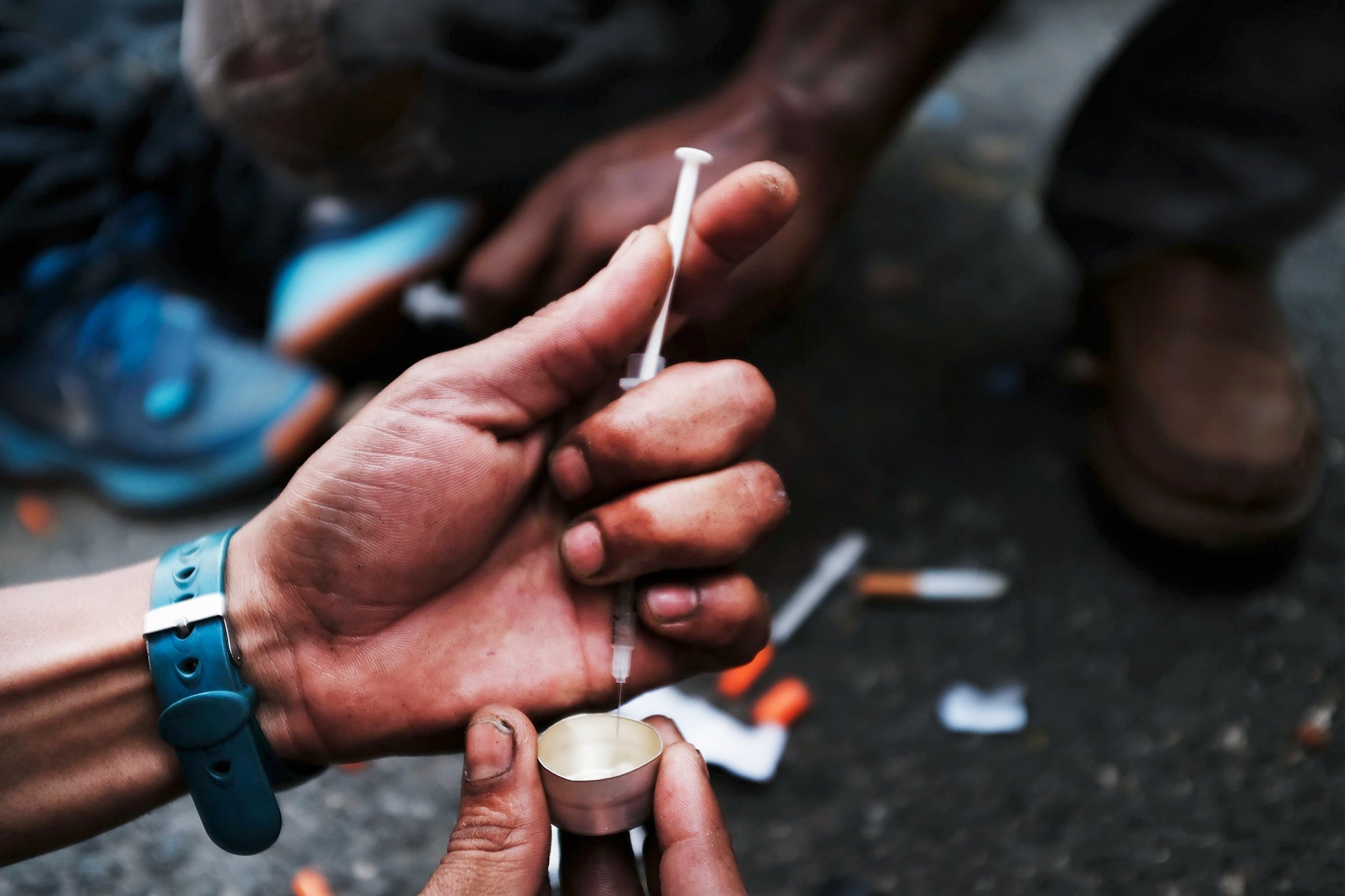
How do you confront an epidemic that has claimed more lives than the HIV/AIDS crisis at its peak? How do you counteract a system that incentivizes the flow of prescription painkillers from doctors to patients and ends up getting 3 million Americans addicted each year? And how do you reverse surging demand for prescription opioids’ illegal substitutes, which are more damaging and toxic but far cheaper and easier to obtain?
You could start by declaring a national public health emergency. That’s what President Trump did on Oct. 26, creating a 90-day window during which federal agencies–from the Food and Drug Administration, which regulates prescription drugs; to the Department of Health and Human Services, which oversees guidelines for treating addiction; to the Department of Justice, which is responsible for prosecuting illegal pill makers and drug dealers; to the National Institutes of Health, which studies how people first get addicted–must shift parts of their existing budgets to address the crisis. After 90 days, the President can renew the emergency status to extend the intensified response.
This is a move in the right direction. But Trump’s order did not make additional funding immediately available, leading those on the front lines of the epidemic to ask what, exactly, it will mean. “Unfortunately, nothing,” says Michael Botticelli, executive director of the Grayken Center for Addiction at Boston Medical Center and former director of National Drug Control Policy in the Obama Administration. “There are no new grant dollars, no new policy initiatives.”
Days after Trump’s declaration, his official White House commission on the crisis issued its final report, which called for many of the initiatives that are backed by experts like Botticelli. The findings make it clear that current strategies and funding are far from adequate.
“What we need is something like the Ryan White Care Act,” says Dr. Sarah Wakeman, medical director of the Substance Use Disorders Initiative at Massachusetts General Hospital. In 1990, Congress passed the act to provide funding for HIV patients who could not afford basic medical care and anti-HIV drugs. With $2.3 billion at its disposal, the fund currently provides care to more than half of all people infected with the virus in the U.S.
For the opioid epidemic, such additional funding would allow more people to receive medication-assisted treatment (MAT), which mimics opioids but has less addictive potential and can wean addicts off their dependence. Studies show that people given medications like methadone or buprenorphine are less likely to overdose or relapse.
Mandating that all health insurers cover substance-use-disorder treatment–as the Affordable Care Act does–would expand access to the medications and help reduce the stigma and controversy surrounding the practice of using drugs to treat drug addiction. But the Trump Administration’s reform efforts threaten to remove such coverage, most of which comes in the form of expanded Medicaid benefits. “If that’s taken away, then we’re back to square one,” says Cheryle Herr, clinical director for the Family Recovery Center in Liverpool, Ohio, which has been hit hard by the epidemic. “Our people are going to die.”
The commission also called for strengthening regulations that require any doctor who prescribes MAT to undergo additional training and certification each time they renew their medical license. Doctors argue that such stringent regulations already deter many from becoming eligible to prescribe MAT and that fewer physicians will be available to dispense the potentially lifesaving addiction treatments, leading to more overdoses and deaths.
The solutions need not come only from doctors, though. Despite the fact that addiction is a medical condition, it’s primarily dealt with by the criminal-justice system–a practice the commission wants to change. It advocated expanding drug courts, which give people the option to enter a recovery program rather than prison, to all 93 federal court jurisdictions in the U.S.
It will be a long haul to end America’s opioid epidemic, a crisis that was decades in the making. But at least we know where to take our first steps.
For more on these stories, visit time.com/ideas
More Must-Reads from TIME
- Cybersecurity Experts Are Sounding the Alarm on DOGE
- Meet the 2025 Women of the Year
- The Harsh Truth About Disability Inclusion
- Why Do More Young Adults Have Cancer?
- Colman Domingo Leads With Radical Love
- How to Get Better at Doing Things Alone
- Michelle Zauner Stares Down the Darkness
Contact us at letters@time.com